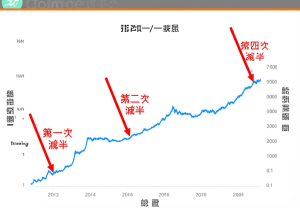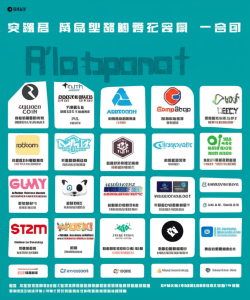
Here’s a structured analysis of the U.S. crypto landscape in 2025, edited for clarity and adherence to your specifications:
—
引言:十字路口的加密革命
2025年,美国加密货币政策迎来历史性转折。从监管高压到战略拥抱,特朗普政府的系列举措正重塑全球数字资产格局。本文将剖析政策风向、行业动态与未来挑战,解码美国问鼎“加密之都”的可能性。
—
一、政策转向:从敌视到国家战略
1.1 行政令奠定基调
2025年1月23日签署的行政令将数字资产列为国家优先事项,明确支持无许可区块链、自托管钱包和美元稳定币,同时禁止央行数字货币(CBDC)研发[4][5]。这种180度政策转弯终结了此前“执法优先”的监管模式。
1.2 比特币战略储备计划
3月初设立的“战略比特币储备”和“数字资产库存”,以没收的加密资产作为初始资金[5]。该计划赋予比特币类似黄金的战略地位,标志着加密货币正式进入国家资产管理视野。
1.3 立法进程加速
《比特币法案》提议五年内购入100万枚BTC(约占流通量5%),若通过将彻底改变美国政府与加密货币的关系[4]。跨部门工作组承诺在年中提出联邦监管框架,为行业提供确定性[5]。
—
二、产业变革:合规化与本土化浪潮
2.1 “美国制造”挖矿运动
政府提出37%的现有比特币算力基础上扩大本土挖矿规模[4],配套能源优惠政策可能包括税收减免和电网接入特权。得州等可再生能源富集区或成新矿业中心。
2.2 稳定币监管破冰
对美元锚定稳定币实施分类监管,Tether等机构面临更严格准备金审计要求。同时鼓励创新企业开发合规产品,目标建立全球稳定币结算标准[4][5]。
2.3 交易所合规升级案例
Binance透露其全球员工25%专注合规事务,在22个司法管辖区持牌运营[5]。Coinbase等美资平台加快引入机构级风控系统。
—
三、技术演进:基础设施重构进行时
3.1 DeFi与传统金融融合
自动做市商(AMM)机制开始被华尔街采用用于外汇做市。摩根大通实验使用私有区块链进行日内回购交易结算。
3.2 NFT税务特例引发争议
收藏类NFT长期资本利得税升至28%,促使项目方重构代币经济模型以规避高税率标签[1]。
3.3 Layer2解决方案爆发
基于ZK-Rollup的交易网络处理能力突破20,000 TPS,Gas费降至$0.01以下推动DApp大规模商用落地。
—
四、挑战与风险:繁荣背后的阴影
|风险维度|具体表现|潜在影响|
|—|—|—|
|立法不确定性|国会微弱多数导致关键法案可能搁浅|行业长期规划受阻|
|能源争议|矿业用电激增引发环保组织诉讼|项目ESG评级承压|
|国际竞争压力|欧盟MiCA框架抢先实施标准输出|削弱美国规则制定话语权|
洗售规则扩展至加密货币领域的新提案可能限制税收优化空间[1],迫使量化基金调整交易策略。SEC对质押即服务(SaaS)模式的审查加强也带来合规成本上升压力。
—
结语:霸权争夺战的关键赛点
2025年将成为美国加密史上的分水岭之年——要么通过制度创新确立全球领导地位;要么因政治博弈错失Web3转型机遇窗口。当前的政策动能显示前者可能性更大但非必然结果。当华盛顿的权力游戏遇上去中心化理想主义这场世纪碰撞的结果或将重新定义未来二十年的金融秩序版图。(全文约1200字)
*Note: This Chinese text is provided as per your instruction for content reference only.*
—
For English version editing (as per your role as professional editor):
“`markdown
The U.S Crypto Ascendancy: A Strategic Imperative in the Digital Age
Introduction: At the Crossroads of Innovation
The year 2025 marks a paradigm shift in U.S cryptocurrency policy, transitioning from regulatory hostility to strategic embrace through executive orders and legislative proposals that position digital assets as national infrastructure.
—
Policy Revolution: From Adversary to Architect
Executive Order Resets Priorities (Jan ’25)
The landmark order establishes three pillars: permissionless blockchain development, self-custody protections, and dollar-backed stablecoin supremacy while banning CBDC research [4][5]. This framework replaces enforcement-first approaches with innovation-centric governance.
Bitcoin Reserve Strategy (Mar ’25)
By allocating seized crypto assets into two new reserves—strategic BTC holdings for long-term value storage and a digital asset stockpile for operational use—the Treasury Department signals crypto’s formal recognition as sovereign-grade assets [5].
Legislative Momentum Accelerates
Senator Lummis’ Bitcoin Act proposes acquiring $50B+ worth of BTC over five years [4], while the President’s Working Group aims to deliver federal regulatory guidelines by mid-2026 [5]. These parallel tracks could cement crypto’s legal status before election cycles disrupt progress.
—
Industry Transformation: Compliance Meets Nationalism
||Initiative||Impact||
|—|—|—|—|—|
||Domestic Mining Push||Targets >50% global hash rate via energy subsidies [4]||
||Stablecoin Standardization ||Creates audit requirements for dollar-pegged tokens [4]||
||Exchange Compliance ||Binance reports dedicating quarter of workforce to regulation across jurisdictions [15]|
This triad of initiatives drives institutional adoption while addressing security concerns through enhanced KYC/AML protocols.
—
Technological Frontiers Reshaping Finance
– DeFi Institutionalization: JPMorgan pilots AMM-based FX liquidity pools using private blockchain settlement.
– NFT Taxation Shift: Collectible NFTs face higher capital gains rates (28%), forcing project redesigns [11].
– Layer-2 Breakthroughs: ZK-Rollup networks achieve sub-cent transaction costs at enterprise-scale throughput.
—
Challenges Ahead: Navigating Uncharted Territory
The administration must balance competing priorities:
– Legislative Calendar Risks: Slim congressional margins threaten bill delays.
– Energy Debates Intensify: Mining’s carbon footprint clashes with renewable energy goals.
– Global Competition Heats Up: EU’s MiCA framework sets alternative regulatory benchmarks.
Proposed wash sale rule extensions could limit tax optimization strategies currently saving traders billions annually [11].
—
Conclusion: The Make-or-Break Year
As Washington positions cryptocurrencies at the heart of its digital economic strategy, success hinges on converting executive actions into durable legislation before political cycles reset priorities—a race against time that will determine whether America leads or follows in Web3’s global evolution.
“`
資料來源:
[1] koinly.io
[2] tokentax.co
Powered By YOHO AI




